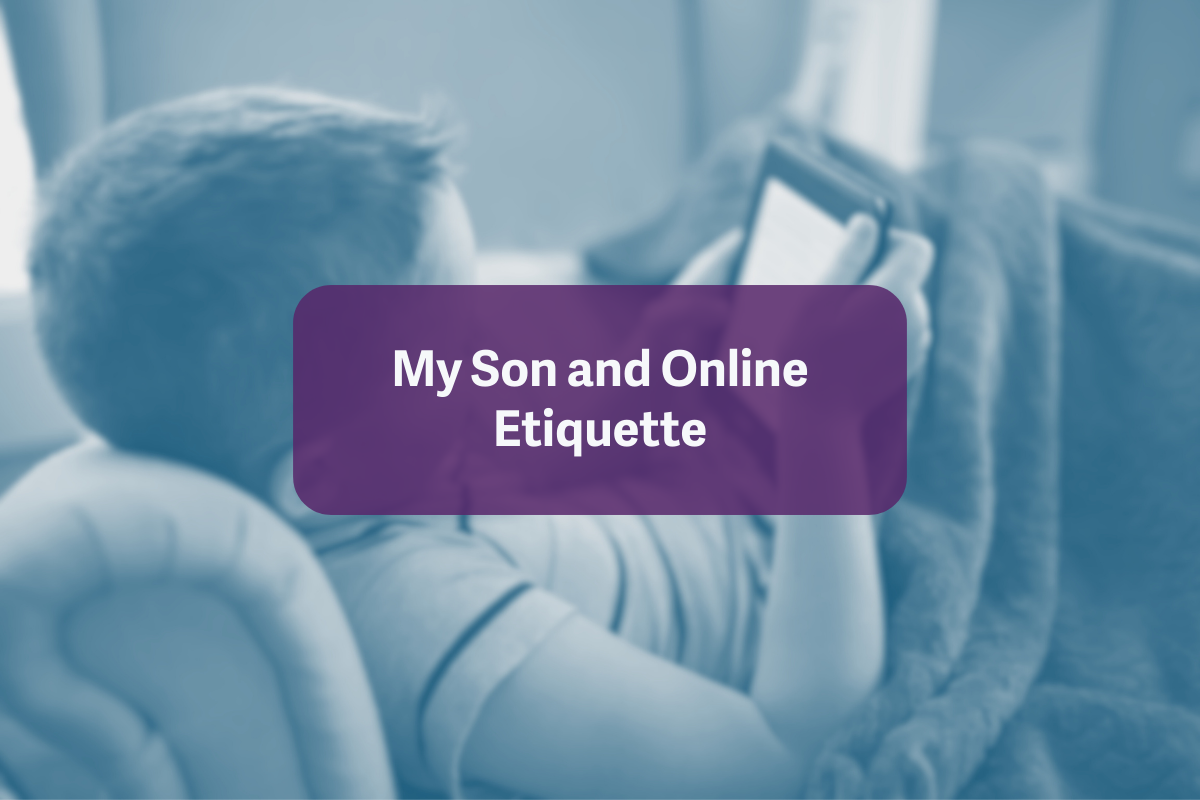Growing Up Digitally: My Kids and Online Etiquette
Just when you think you’ve got everything sorted out as a parent, life (or your kid!) throws you an unexpected curveball – and that’s precisely what I’ll be addressing today: kids and online etiquette.
Recently, my son asked to join Facebook Messenger to stay connected with friends and family who had recently moved away.
Insert a big parenting gulp here!
I experienced a minor panic attack because I hadn’t realized that we had reached that milestone in life – these sorts of milestones tend to sneak up on you, of course. My sweet little boy wanted to communicate online!
As a mom, I wasn’t quite prepared for this leap. However, I understood that it was a step we needed to take, whether we were ready or not – and one that would require a delicate touch to get right.
Continue reading to learn about how I initially mishandled it all (and eventually made it right!) below.
Setting the Scene
I’ll pause here to recognize that as a parent, I’ve maintained strict limits on my child’s screen time for as long as I could. However, I’m equally mindful of the advantages of online communication with friends and family who reside far away. With this in mind, I embarked on a journey of research and planning to facilitate this.
We installed all the necessary applications on his tablet and configured all available parental controls. As a safeguard, we included a specific group of friends and family members on his contact list for communication. We established certain guidelines, and I set him off into the expansive digital realm to explore.
A Few Unexpected Hiccups
Initially, he primarily conversed with his friends and a few cousins, and everything seemed fine. However, it wasn’t long before I received a few comments from friends and family regarding my son’s messaging etiquette.
I was taken aback. “What do you mean?” I asked urgently. “Is he using inappropriate language? Behaving inappropriately? Sharing questionable content? What’s happening???”
The response caught me off guard. If you were to engage in any form of conversation or interaction with my son in the physical world, you would find him to be amicable, respectful, and consistently mindful of his manners. However, upon reviewing some of his recent messages, I swiftly realized that his online interactions were markedly different. He would:
- ignore people mid-conversation.
- message or video call people 30+ times in a row.
- send random emojis or cryptic messages for the shock value.
- pester people who never responded to him.
- There wasn’t a single please or thank you to be seen.
I was ready to have a serious talk with him when he got home from school. This was not how he was raised to speak to people, after all!
Then, it dawned on me.
A Very Real Realization
After giving myself some time to overcome the initial shock of my son’s unexpected and unprecedented digital behaviour, a sudden and clarifying realization dawned on me: I had never actually taught him how to communicate and conduct himself online.
Certainly, I had thoroughly covered all the safety tips, but I had completely overlooked the realm of fundamental online etiquette. Throughout his entire life, I had been instructing him on proper behavior – to display kindness, thoughtfulness, and respect – but all of that guidance was based on situations that occurred in the physical world, not the online sphere.
Once again, I found myself navigating uncharted territory as a parent. Surprise!
How We Responded as Parents to Online Etiquette
There are numerous reasons to teach our kids how to conduct themselves in the real world, but the importance of online etiquette often remains an overlooked aspect of modern parenting discussions.
With that in consideration, here are a few essential thoughts, behaviours, and recommendations that I encountered during my research and a recent crash course on the subject:
- Safeguard Their Digital Presence: By aiding your kids in recognizing social and digital blunders, you can assist them in sidestepping potentially embarrassing moments that might otherwise be shared digitally and perpetuated for years to come.
- Cultivate Positive Relationships: Online etiquette educates kids about communicating respectfully and courteously with others. While there is some overlap in communication between the online and real-world domains, the digital landscape presents an entirely new language filled with acronyms and linguistic shortcuts. This introduces a fresh set of standards for kids (and parents!) to master.
- Foster Skills to Counter Cyberbullying: Cyberbullying is an escalating issue among kids – one that genuinely concerns me. By acquiring knowledge of online etiquette, kids can grasp the consequences of their digital actions and learn to treat others with kindness and empathy. Furthermore, understanding the guidelines for addressing online bullying helps them avoid potential pitfalls that might make them targets – a rare win-win in the virtual realm.
- Prioritize Personal Safety: With a grasp of digital etiquette, kids can identify and steer clear of potential online hazards. They learn how to shield their personal information and ensure their internet safety. This process equips them with the skills needed to navigate the online world while protecting themselves effectively.
A Few Final Thoughts
By teaching my son basic online etiquette, I see how it’s helped him foster autonomy, personality, and even personal education online.
It’s a big learning curve (for parents and kids alike!). I still watch my son’s activity closely, but the benefits to his growth as a human being have been tangible. He is now exploring the digital world at large – and that’s a win in my parenting books, hands-down.
Want to chat about bringing the right sort of online etiquette and presence to your digital platforms? Contact us at The Marketing Girl to learn more about treating your customers right (and drumming up new ones) in the digital realm and beyond!








